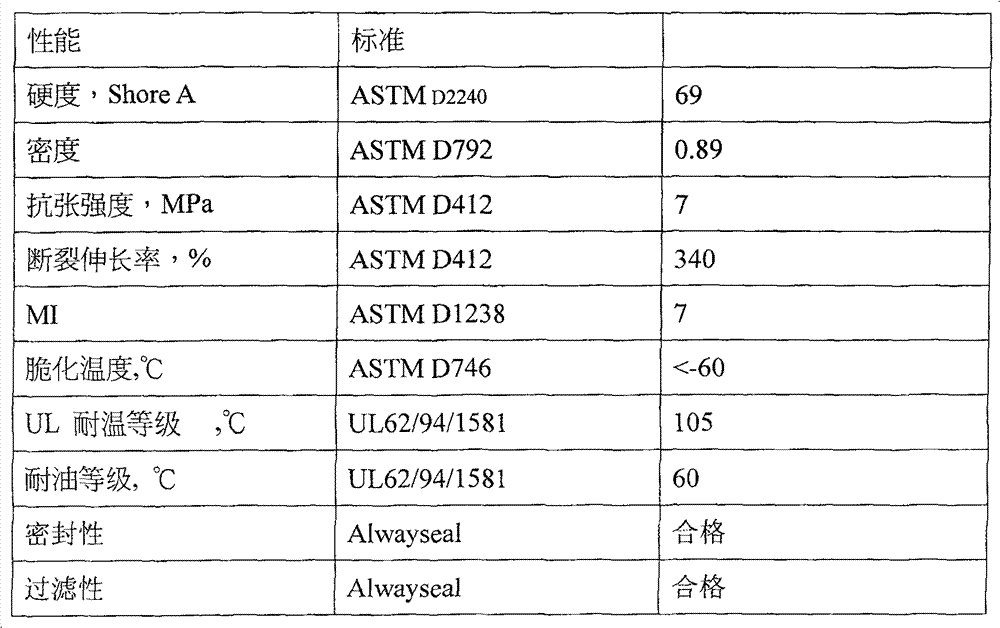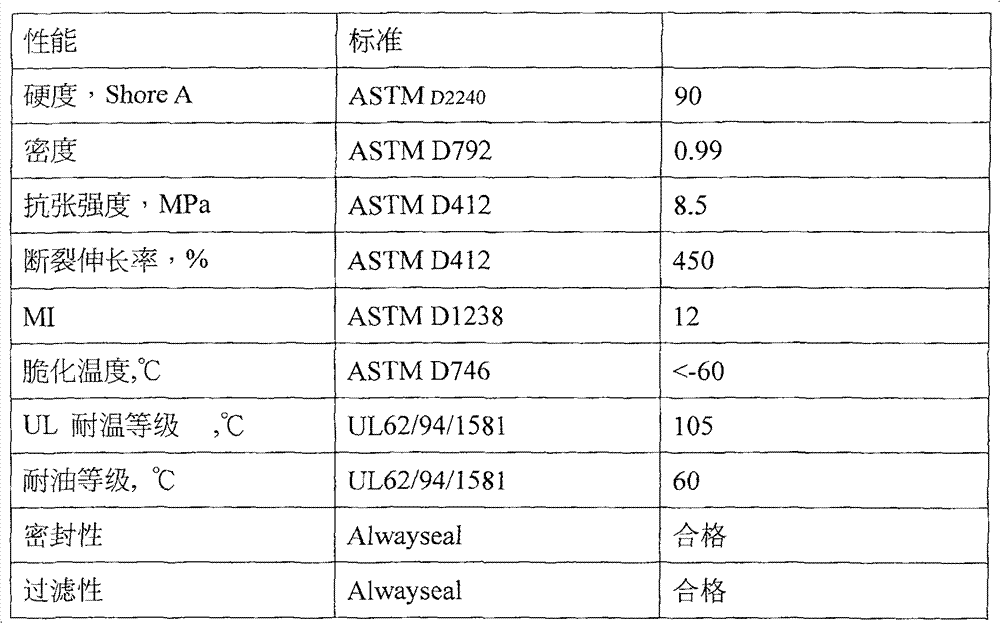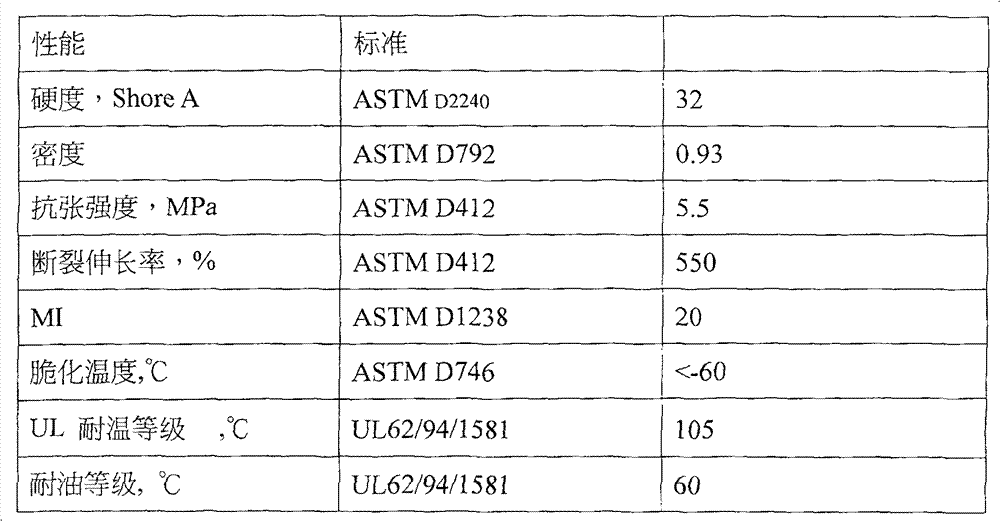Method for preparing air strainer by using environment-friendly TPE (thermoplastic elastomer)
An air filter, an environment-friendly technology, applied in the field of air filter preparation, can solve the problems of resource waste, non-environmental protection, low efficiency, etc., and achieve the effects of improving production efficiency, saving resources, and good flexibility
- Summary
- Abstract
- Description
- Claims
- Application Information
AI Technical Summary
Problems solved by technology
Method used
Image
Examples
Embodiment 1
[0037] 1. Raw material preparation: including each ingredient according to the following weight ratio:
[0038] SEBS 100 copies;
[0039] 5 parts white mineral oil;
[0040] 5 parts of polypropylene PP;
[0041] 5 parts of polyurethane;
[0042] 1 part of EPDM rubber;
[0043] Antioxidant 0.2 parts;
[0044] 5 parts of maleic anhydride grafted polypropylene.
[0045] 2. Preparation equipment: twin-screw extrusion granulator, injection molding machine, and prefabricated molds for manufacturing air filter nets.
[0046] 3. Preparation steps:
[0047] Step 20, first pour SEBS into the mixer;
[0048] Step 30, put the white mineral oil into the blender, and stir for 1 minute;
[0049] Step 40, put other raw materials together, and stir for 1 minute to fully mix;
[0050] Step 50, putting the mixed materials into a twin-screw granulator to extrude and granulate at 150°C to obtain environment-friendly TPE particles;
[0051] Step 60. Put the prepared environmentally friend...
Embodiment 2
[0055] 1. Raw material preparation: including each ingredient according to the following weight ratio:
[0056] SEBS 100 copies;
[0057] 380 parts of white mineral oil;
[0058] Polypropylene PP 200 parts;
[0059] 100 parts of polyurethane;
[0060] 80 copies of EVA;
[0061] 100 parts of calcium carbonate;
[0062] 3 parts calcium stearate;
[0063] 15 parts of EPDM rubber;
[0064] 3 parts of titanium dioxide;
[0065] Antioxidant 1 part;
[0066] 5 parts of maleic anhydride grafted polypropylene;
[0067] 2. Preparation equipment: twin-screw extrusion granulator, injection molding machine, and prefabricated molds for manufacturing air filter nets.
[0068] 3. Preparation steps:
[0069] Step 20, first pour SEBS into the mixer;
[0070] Step 30, put the white mineral oil into the blender, and stir for 5 minutes;
[0071] Step 40, put other raw materials together, and stir for another 5 minutes to fully mix;
[0072] Step 50, putting the mixed materials into a ...
Embodiment 3
[0077] 1. Raw material preparation: including each ingredient according to the following weight ratio:
[0078] SEBS 100 copies;
[0079] 200 parts of white mineral oil;
[0080] 80 parts of polypropylene PP;
[0081] 50 parts of polyurethane;
[0082] 30 copies of EVA;
[0083] 50 parts of calcium carbonate;
[0084] 2 parts calcium stearate;
[0085] 8 parts of EPDM rubber;
[0086] 5 parts of titanium dioxide;
[0087] Antioxidant 0.6 part;
[0088] 3 parts of maleic anhydride grafted polypropylene.
[0089] 2. Preparation equipment: twin-screw extrusion granulator, injection molding machine, and prefabricated molds for manufacturing air filter nets.
[0090] 3. Preparation steps:
[0091] Step 20, first pour SEBS into the mixer;
[0092] Step 30, put the white mineral oil into the blender, and stir for 3 minutes;
[0093] Step 40, put other raw materials together, and stir for another 3 minutes to fully mix;
[0094] Step 50, putting the mixed materials into a...
PUM
 Login to View More
Login to View More Abstract
Description
Claims
Application Information
 Login to View More
Login to View More - R&D
- Intellectual Property
- Life Sciences
- Materials
- Tech Scout
- Unparalleled Data Quality
- Higher Quality Content
- 60% Fewer Hallucinations
Browse by: Latest US Patents, China's latest patents, Technical Efficacy Thesaurus, Application Domain, Technology Topic, Popular Technical Reports.
© 2025 PatSnap. All rights reserved.Legal|Privacy policy|Modern Slavery Act Transparency Statement|Sitemap|About US| Contact US: help@patsnap.com



